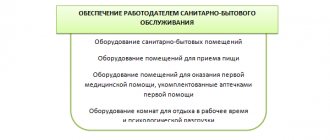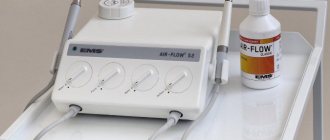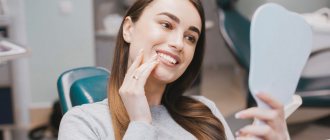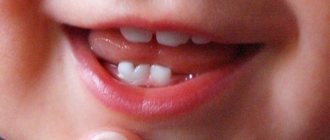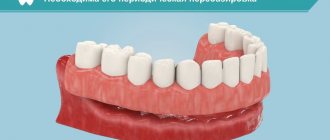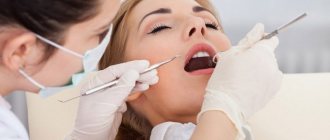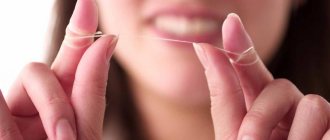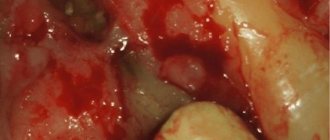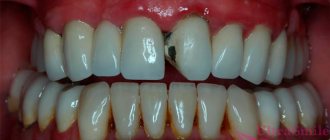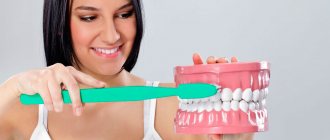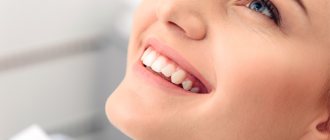The dentist's office, as well as other rooms where complex medical procedures are performed, must be perfectly clean and highly sterile. This is ensured by a number of measures to maintain and restore order. One of the most important activities of this kind is general cleaning in the dental office , which includes thorough washing and complete disinfection of all surfaces. Its regular implementation allows you to maintain asepsis in dentistry, and this makes treatment safer and more successful.
GENERAL CLEANING IN DENTISTRY - RULES FOR WASHING AND DISINFECTION
Any cleaning in dentistry must comply with the standards described in special documents. Only then will it help achieve the desired cleanliness. Here are the main rules for general cleaning:
- in the dental office only specially designated equipment is used (they do not clean other rooms with it);
- in normal times, buckets, mops, etc. are stored in a separate place (this could be, for example, a special cabinet);
- for cleaning work it is necessary to wear special clothing;
- all surfaces are washed in a certain sequence - first the ceiling, walls, then windows and elements of the heating system, then furniture and equipment and finally floors;
- General cleaning of surgical dental offices is carried out weekly, and therapeutic and orthopedic - monthly.
Rules for the use, processing and storage of cleaning tools
Sanitation of the premises is carried out using metal and plastic buckets, mops, brushes, and sterile rags. Cleaning equipment should be separate for each type of dental office, as well as for routine and general cleaning. Mixing or interchange of items is not permitted. To prevent accidental misuse, equipment must be marked with indelible writing, color coding, or other visible means.
After use, all cleaning equipment is thoroughly treated with disinfectant solutions, then washed in hot running water and dried. It is advisable to use textile napkins once, but if this is not possible, they are washed in powder with boiling water.
Cabinets for storing cleaning equipment should be separate, in accordance with which office and for what type of cleaning certain items are used, and located outside the medical offices, in specially designated rooms.
GENERAL CLEANING IN DENTISTRY. WHAT DO YOU NEED TO WORK?
To properly perform general cleaning in a dental office, you will need the following set of tools and equipment:
- buckets (4 pcs. - two each for the floor and everything that is above the floor);
- two mops (one “floor”, the second – for walls and ceilings);
- plenty of clean and sterile (disposable) wipes (traditionally, rags are used instead).
You will also need good detergents and disinfectants (DS). The latter must effectively combat pathogens, but at the same time not exhibit a strong toxic effect on people. DS with a detergent component are especially convenient; then washing and disinfection can be performed simultaneously, in one go. Many people prefer disinfectants that do not require rinsing - this also saves the cleaner’s time.
CARRYING OUT GENERAL CLEANING IN DENTISTRY IN STAGES
Over the years of development of medicine, the most convenient and effective procedure for carrying out cleaning and disinfection work has been developed. It is described in regulatory documentation as an algorithm for carrying out general cleaning, and it is highly undesirable to deviate from it. In dentistry it works like this:
- clean particularly dirty surfaces from dust and stains using a regular detergent;
- wipe all surfaces with napkins generously soaked in DS solution;
- disinfect the room with ultraviolet light (you need to turn on the bactericidal lamp for an hour);
- after UV irradiation, wash off the disinfectant solution from surfaces with sterile or disposable wipes and clean water;
- turn on the bactericidal lamp again (for half an hour to an hour).
Safe chemistry
Disinfection of dental instruments is carried out using physical methods or chemical solutions.
The choice of the former involves the use of boiling. The items are immersed in hot distilled water and boiled for thirty minutes. To enhance the effect, 2% sodium bicarbonate can be added to the boiling liquid. Sometimes the method of exposure to saturated steam, the temperature of which is 110 degrees Celsius, is used. To destroy all pathogenic organisms, the exposure time should be at least 20 minutes. Many large clinics purchase an air sterilizer. In it, disinfection is carried out by exposure to dry hot air, the temperature of which is 120 degrees Celsius. The time of one session is 45 minutes.
The choice of physical disinfection methods has a number of limitations. Such processing of tools provokes the development of metal corrosion, sharp parts quickly become dull, and mirror elements become dull. Only clean instruments without protein or fat contamination can be loaded into the air sterilizer. Therefore, you first have to use a manual processing method. This increases the complexity of the process and time costs.
Chemical disinfection in dentistry is disinfection, which is carried out using a disinfectant (chemical solution). This method is actively used by dental clinics. There is a list of funds approved by the Department of State Sanitary and Epidemiological Surveillance of the Ministry of Health of the Russian Federation. Their use is strictly regulated. Methodological guidelines have been developed and implemented. Using them, medical workers prepare solutions and use them to disinfect work surfaces and instruments.
Chemical solutions with a wide spectrum of action and non-toxic are selected. The disinfectant must have a rapid action, demonstrate resistance to external factors, and have a residual antimicrobial effect. An important component of the choice is odorlessness, good solubility, stability of the formula and ease of use.
Chemical disinfection has one significant drawback. There is always a risk of possible poisoning and the development of allergic reactions in patients and medical personnel performing disinfection. Recently, resistance has been observed in microorganisms. Therefore, the search for new opportunities is always relevant.
The last word in the field of disinfection is the use of autoclaving - temperature treatment at high pressure. This is carried out through the installation of special devices. They generate steam that kills everything, including fungal spores. To increase the disinfecting effect, manufacturers produce autoclaves equipped with a system for removing air and oxygen - components that can protect certain bacteria. The completely evacuated air gives the hot steam greater penetrating force.
Any dentistry has a device for disinfecting impressions of dental products. It is used to disinfect objects used in prosthetics. They are immersed in a closed system. At the initial stage, preliminary cleaning is carried out with soft irrigation, then intensive cleaning is carried out, in which a disinfectant solution is sprayed under high air pressure. This method allows you to treat any, even the most inaccessible places. At the final stage, the loaded material is washed and dried using air spray. A high-quality modern device for disinfecting impressions of dental products and instruments carries out the described procedure in just 12 minutes.
GENERAL CLEANING IN DENTISTRY. HOW TO CORRECTLY WASH THE WALLS AND FLOORS OF A DENTAL OFFICE?
Even such a simple, at first glance, work as washing surfaces, in medicine cannot be carried out somehow. There is a special “two bucket” method that should be used during spring cleaning. You need to take two containers and pour disinfectant solution into one and water into the other.
The napkin must first be thoroughly moistened in DS and squeezed out. Use it to wipe the desired surface (no more than 2 sq. m). After this, the napkin should be thoroughly rinsed in a bucket of water and moistened again in the disinfectant solution. This cycle is repeated for each section of walls, furniture, floors, etc. The liquid in the buckets must be changed: water - as it gets dirty, and a disinfectant solution - after treating 60 square meters. m of surface.
How to prepare?
If your activity is related to the provision of dental services, you can contact the Medical Licensing Center for a free consultation on changes in legislation. We will help you comply with all the necessary standards and requirements for the smooth operation of your business.
We provide a full range of services in the field of licensing of medical and x-ray activities. We carry out design, installation, preparation of technical passports, obtaining conclusions. Our specialists will help you obtain all the necessary permits.
Call right now, we will be happy to answer your questions
GENERAL CLEANING IN DENTISTRY. SIMPLIFIED OPTION FOR CLEANNESS
Having looked only at the general recommendations for general cleaning in dentistry, you can understand how labor-intensive and responsible work it is. It takes up a lot of valuable time from the clinic staff, because, as a rule, the office nurse deals with the “general staff.” But many private and public medical institutions have discovered professional cleaning services. General cleaning ordered from a reliable agency will be carried out as quickly as possible, at a time convenient for you and in accordance with all requirements. In St. Petersburg, high-quality cleaning is provided.
Normative base
In the Russian Federation, general sanitary rules and standards for organizing their activities apply to all medical institutions. But depending on the specific profile of the medical institution, additional standards are applied to ensure the safety of patients. The requirements for a dental clinic are formulated in the federal law of November 21, 2011 No. 323-FZ, dedicated to the protection of public health and medical care, and in SanPin 2630-10 “Sanitary and epidemiological requirements for organizations engaged in medical activities.”
Changes for 2021
Currently, the main relevant document establishing sanitary and hygienic requirements for the work of dental organizations is SanPiN 2.1.3.2630-10 in the current edition. In connection with its adoption, a number of previously existing rules were canceled. For example, now a separate SanPiN 2.1.3.2524-09 “Sanitary and hygienic requirements for dental medical organizations” is no longer valid.
Since then, the text of the new rules has been repeatedly amended to ensure that its requirements correspond to the current situation in the field of medical care and public health. Their entry into force was due to the adoption of resolutions of the Chief State Sanitary Doctor dated March 4, 2016 No. 27 and June 10, 2016 No. 76. This year, the text of the current requirements for sanitary and epidemiological regulations has not been changed. The introduction of new sanitary and hygienic requirements for dental organizations has also not been announced in the near future. There are no plans to renew the validity of already canceled documents, therefore, for example, the previously abolished SanPiN 2.1.3.1375-03 with amendments for 2022 is unlikely to appear.
Current statuses of sanitary and hygienic rules and regulations
| SanPiN 2.4.3.1186-03, status for 2022 | Active |
| SanPiN 2.6.1.1192-03, status for 2022 | Active |
| SanPiN 2.4.1.2660-10, status for 2022 | Inactive |
| SanPiN 2.1.3.2630-10, status for 2022 | Active |
| SanPiN 2.1.3.2524-09, status for 2022 | Inactive |
| SanPiN 2.1.3.1375-03, status for 2022 | Inactive |
